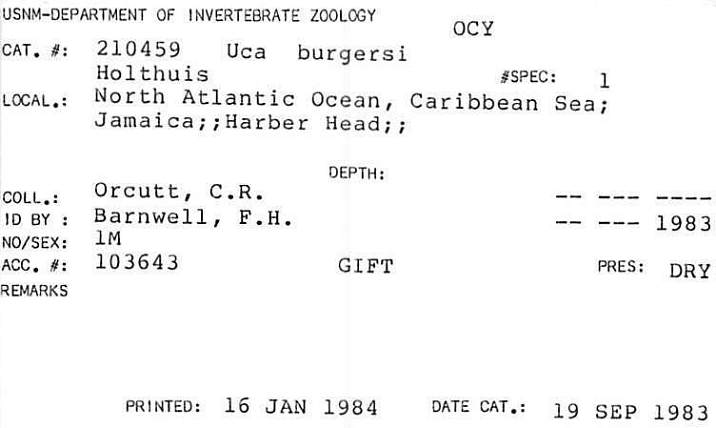
Invert E Base
Reaching back to see the future
|
|
|
|
Family: Ocypodidae
saltpan fiddler
|
Bocas Species Database Habitat: This species favors muddy sand habitats near mouths of streams. Distribution: This crab species has been reported from the Western Atlantic, from Mexico to Brazil and in the West Indies. Natural History Notes: The activity of fiddler crabs is related to the tides. At low tides, the crabs stay in their burrows, but during the low tides, the crabs open their burrow and reach the surface to feed, clean their burrow and to undergo courtship. Characteristics: This species has a carapace of up to 1.2 cm long. Its coloration pattern consists in a dark brown background with red or pink patches on the carapace and some red on the major claw. The walking legs are brown with sometimes gray lines. We can also distinguish tubercules on the major claw. Fiddler crabs (genus Uca) present easily recognizable sexual dimorphism. The males have one very large claw (major claw) that is used to undergo a characteristic wave to attract females or to defend its territory. The females do not posess such a large claw. Also, the males usually have more conspicuous colors and they are larger than the females. |
Powered by Symbiota.





